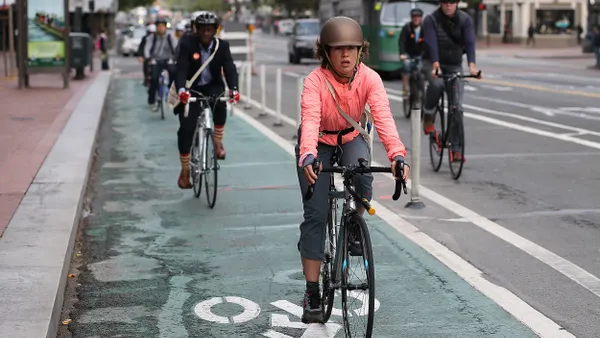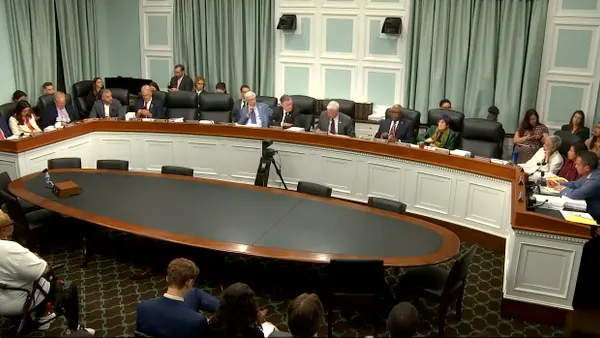Dive Brief:
- The FAA has released final rules for drones regarding remote identification and flying over people, paving the way for more delivery drone operations, according to an agency press release.
- The new FAA rules will require remote identification of drones and allow small drones to fly over people and at night in specific conditions. Remote identification, referred to as a "digital license plate," provides the drone's control station location and allows law enforcement to identify the drone in flight. Operators will be required to carry a remote pilot certificate and identification when actively using their drone.
- Though these rules, which will become effective 60 days after they are published in the Federal Register, have been long-awaited, other obstacles stand in the way of widespread adoption of drones for logistics.
Dive Insight:
The logistics industry has seen a flurry of drone activity with UPS, Amazon Prime, Walmart and others working closely with the FAA. But widespread adoption for these operations has been precluded by the slow pace of regulation. New drone rules bring that future a little closer to reality.
"The new rules make way for the further integration of drones into our airspace by addressing safety and security concerns," said FAA Administrator Steve Dickson. "They get us closer to the day when we will more routinely see drone operations such as the delivery of packages."
FAA Part 107 regulations require that operators keep drones in the line of sight, and used to prohibit flying over people and at night. Companies currently have to get Part 135 certification to fly beyond visual line of sight and carry another's property for compensation. The new rules give operational freedom without having to acquire a special waiver.
Kevin Lyons, associate professor of supply chain management at Rutgers Business School, noted hurdles still remain. Many people and organizations see drones as a serious privacy issue, which can make the concept of home delivery via drone unappealing.
"Cameras on the drones need to be active at all times so the drones will be literally recording everything it sees," Lyons said in an email. "The ability to see into peoples houses, backyards, etc. is something that currently exists with satellites ... but the drones will be a visible intrusion to many people."
Though commercial drone activity may surge initially, based on FAA's latest actions, Lyons questioned how long the uptick would last and if the expense of full adoption and security concerns stymie growth.
"Developing a fleet of these drone systems ... in addition to the cost of the equipment and maintenance" is expensive, he wrote. Additionally, drone pilots would have to be hired or current logistics professionals re-trained.
But his hunch is that transportation and logistic communities will find opportunities to enhance their delivery systems after conducting an exhaustive cost-benefit analysis, finding that it should be less expensive to ship using drone technology, "depending on distance and weight-load limitations," he said.
Drones currently are the fastest-growing component of the transportation industry, with over 1.7 million drone registrations and 203,000 FAA-certificated remote pilots, per FAA.











